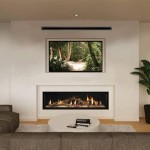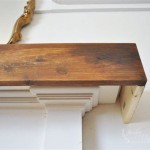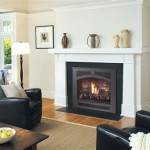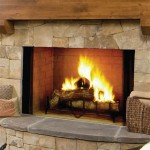Best Wood For Fireplace Burning: A Comprehensive Guide
Selecting the appropriate wood for a fireplace is crucial for ensuring efficient burning, maximizing heat output, and minimizing the risk of creosote buildup. Different wood species possess varying densities, moisture contents, and resin levels, all of which significantly impact their performance as firewood. This article provides a detailed overview of the characteristics of various wood types and identifies the best options for fireplace use.
Understanding Key Firewood Characteristics
Several key characteristics determine the suitability of wood for burning in a fireplace. These include density, moisture content, resin content, and ease of splitting. Understanding these factors is essential for making informed firewood selections.
Density: Denser woods generally burn longer and produce more heat than less dense woods. Density is directly related to the amount of energy stored within the wood. Hardwoods, typically denser than softwoods, are preferred for extended burn times and sustained heat output. Examples of dense hardwoods include oak, hickory, and maple.
Moisture Content: Freshly cut wood, often referred to as "green" wood, contains a high moisture content. Burning green wood consumes energy to evaporate the water, resulting in reduced heat output, increased smoke production, and a greater risk of creosote formation. Creosote is a flammable substance that accumulates in the chimney and can lead to dangerous chimney fires. Ideally, firewood should be seasoned, or dried, for at least six months, and preferably longer, to reduce its moisture content to below 20%. Seasoned wood will be lighter in weight, display cracks on the ends, and produce a hollow sound when struck against another piece of wood.
Resin Content: Softwoods, such as pine and fir, tend to have a higher resin content than hardwoods. Resinous wood burns quickly and intensely, producing a bright flame and a pleasant aroma. However, it also produces more smoke and creosote than hardwoods. While softwood can be used for kindling and starting fires, hardwoods are the preferred choice for sustained burning.
Ease of Splitting: Wood that splits easily is easier to prepare for burning. Certain wood species, such as elm and sycamore, are notoriously difficult to split due to their interlocking grain patterns. Easier-to-split woods include ash, oak, and maple. The ease of splitting wood can significantly impact the labor involved in preparing firewood.
Top Hardwood Choices for Fireplace Burning
Hardwoods are generally considered the best choice for fireplace burning due to their high density, low resin content, and extended burn times. The following are some of the best hardwood options, each with its own unique characteristics:
Oak: Oak is widely regarded as one of the best firewood choices. It is a dense hardwood that burns slowly and steadily, producing a high heat output. Oak provides long-lasting embers, making it ideal for extended burning sessions. Oak requires a longer seasoning time than other hardwoods, typically at least 12 months. Different varieties of oak, such as red oak and white oak, have slightly different burning characteristics, with white oak generally considered to be more dense and longer-burning.
Hickory: Hickory is another excellent firewood choice, known for its high heat output and distinctive aroma. It is a very dense hardwood that burns hot and long. Hickory is also relatively easy to split, making it a desirable option for firewood preparation. The aroma produced by burning hickory is often described as sweet and nutty. Hickory is a popular choice for both fireplace burning and smoking meats.
Maple: Maple is a good all-around firewood option, offering a balance of heat output, burn time, and ease of splitting. It is a moderately dense hardwood that burns cleanly and produces minimal smoke. Maple is relatively easy to season, typically requiring about 6-9 months of drying time. Different varieties of maple, such as sugar maple and red maple, have slightly different burning characteristics, with sugar maple generally considered to be the denser and longer-burning option.
Ash: Ash is a popular firewood choice due to its ease of splitting, relatively quick seasoning time, and good heat output. It is a moderately dense hardwood that burns cleanly and produces minimal smoke. Ash can be seasoned in as little as 6 months, making it a convenient option for those who need firewood quickly. Ash is also known for its straight grain, which makes it easy to split even with hand tools.
Beech: Beech is a dense hardwood that burns hot and long, similar to oak. It produces excellent heat and leaves behind good coals. Beech is a relatively clean burning wood, producing less smoke than some other hardwoods. However, beech can be somewhat difficult to split, particularly if it has knots or irregular grain patterns. Beech is a good choice for those seeking a high-quality firewood option with a long burn time.
Considerations for Softwood Use in Fireplaces
While hardwoods are generally preferred for fireplace burning, softwoods can be used in certain situations, particularly for kindling and starting fires. The key considerations when using softwoods are their higher resin content and faster burn rates.
Pine: Pine is a readily available and inexpensive softwood that is often used for kindling. It ignites easily and produces a hot flame, making it ideal for starting fires. However, pine burns quickly and produces more smoke and creosote than hardwoods. Therefore, it should be used sparingly and in conjunction with hardwoods for sustained burning. Different varieties of pine have varying resin contents, with some being more prone to creosote buildup than others. Regularly inspect and clean the chimney when burning pine to prevent chimney fires.
Fir: Fir is another softwood that can be used for kindling and starting fires. It is similar to pine in its burning characteristics, igniting easily and producing a hot flame. Fir also burns quickly and produces more smoke and creosote than hardwoods. Therefore, it should be used sparingly and in conjunction with hardwoods for sustained burning. Fir generally has a slightly lower resin content than pine, making it a slightly better option for fireplace use. However, careful chimney maintenance is still essential when burning fir.
Cedar: Cedar is a softwood that is often used for kindling and starting fires due to its aromatic properties and ease of ignition. It burns quickly and produces a pleasant aroma, but it also produces more smoke and creosote than hardwoods. Cedar should be used sparingly and in conjunction with hardwoods for sustained burning. The aromatic oils in cedar can contribute to creosote buildup, so regular chimney maintenance is particularly important when burning cedar.
Spruce: Spruce is a softwood that burns quickly and produces considerable heat when ignited. However, it tends to spark and pop more than other wood types. It is best used mixed with hardwoods and not burned in large amounts. It is not a preferred wood type for fireplaces due to the higher risk of sparks escaping.
Ultimately, the best wood for fireplace burning is dry, seasoned hardwood. Careful selection and proper seasoning significantly improve burning efficiency, reduce creosote buildup, and enhance the overall fireplace experience. Softwoods can be used for kindling, but hardwoods are the preferred choice for sustained burning and optimal heat output.

The Best And Worst Types Of Wood For Burning In Fireplace Bob Vila

What Is The Best Wood For Fireplace Comfort All Winter Long

Best And Worst Woods For Fireplaces

What Is The Best Wood To Burn In Your Fireplace Does It Matter

What S The Best Wood To Burn For My Fireplace Capitol Chimney

The Best Kinds Of Wood For Indoor Fireplaces And A Few To Never Burn Indoors Manual

Best Wood To Burn 5 Effective Guides Follow

The Best Wood Fireplaces Of 2024 Direct Learning Center

The Best Wood Burning Fireplace Inserts Or Stoves Ecohome

What S The Best Wood For Your Fireplace Vertical Chimney Care








